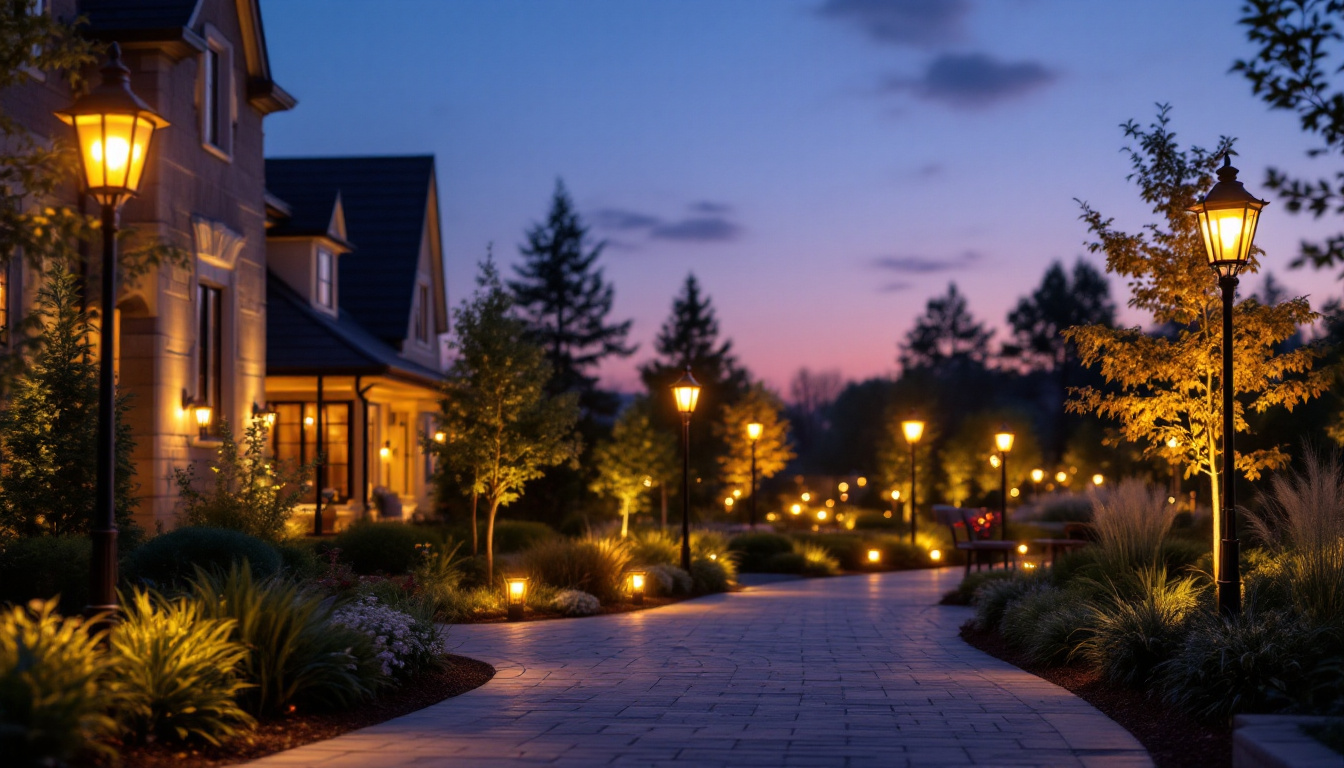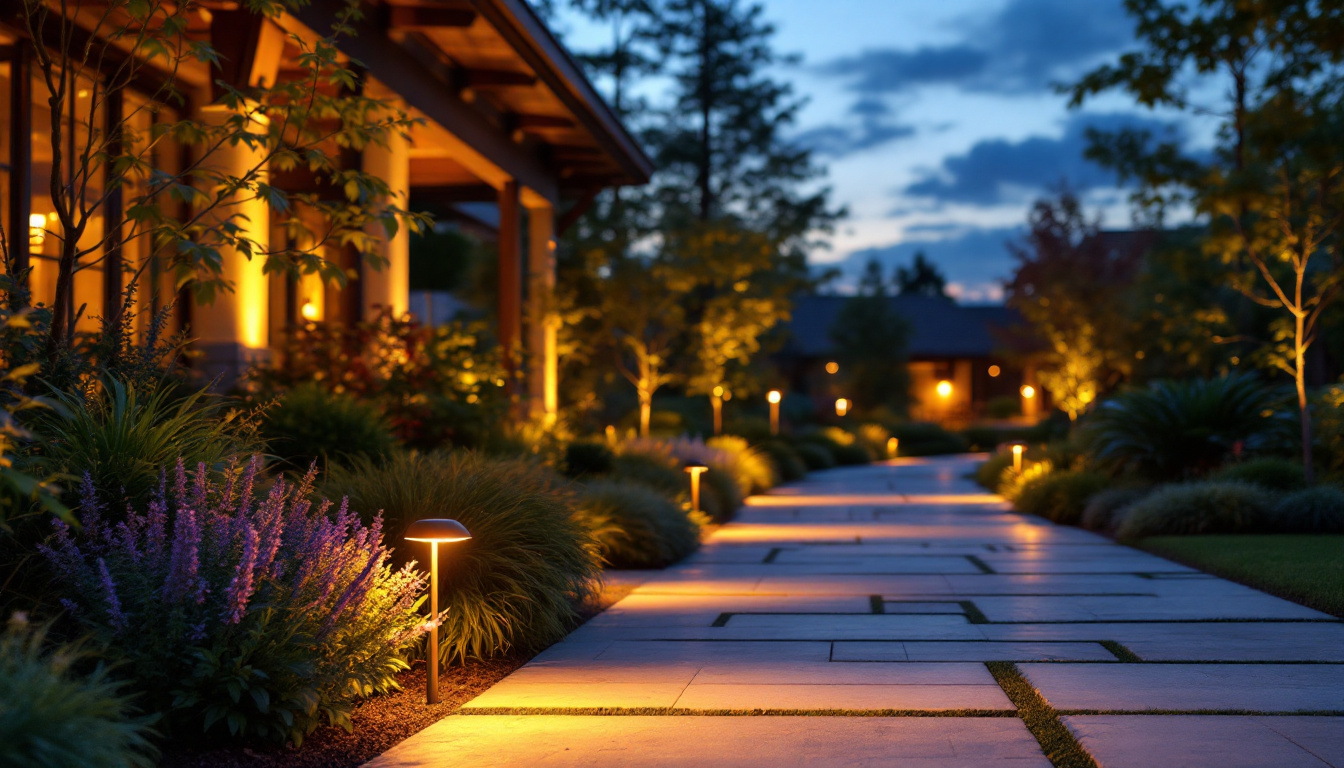

In the realm of outdoor lighting, electric lamps play a pivotal role in enhancing aesthetics, ensuring safety, and providing functionality. For lighting contractors, understanding the various types of outdoor electric lamps, their applications, and installation techniques is essential. This comprehensive guide aims to equip contractors with the knowledge needed to make informed decisions, streamline installations, and satisfy client needs.
Outdoor electric lamps come in a variety of styles and functionalities, catering to different environments and purposes. From illuminating pathways to accentuating architectural features, these lamps can transform outdoor spaces into inviting areas. This section delves into the fundamental aspects of outdoor electric lamps, including their types, benefits, and considerations for selection.
There are several types of outdoor electric lamps, each designed for specific applications. The most common types include:
Choosing electric lamps for outdoor spaces offers numerous advantages. Firstly, they provide enhanced visibility, which is crucial for safety during nighttime. Secondly, outdoor electric lamps can significantly elevate the aesthetic appeal of a property, making it more inviting. Additionally, advancements in technology have led to energy-efficient options, such as LED lamps, that reduce electricity costs while providing superior lighting quality. Moreover, many outdoor electric lamps are designed with durability in mind, often featuring weather-resistant materials that can withstand harsh conditions, ensuring longevity and consistent performance throughout the seasons.
When selecting outdoor electric lamps, several factors should be taken into account:
Additionally, it’s essential to think about the installation process and whether professional assistance is needed. Some outdoor electric lamps may require complex wiring or mounting, while others can be easily set up by homeowners. Furthermore, consider the lamp’s brightness and color temperature, as these factors can dramatically affect the mood and functionality of your outdoor space. For instance, warmer light tones can create a cozy atmosphere for evening gatherings, while brighter, cooler tones may be more suitable for security purposes or task-oriented areas.
Proper installation is crucial for the functionality and longevity of outdoor electric lamps. This section outlines best practices and techniques that lighting contractors should follow to ensure successful installations.
Before installation, it’s essential to plan the layout carefully. This involves assessing the area to determine the optimal placement of lamps. Factors such as the height of the fixtures, the intensity of light required, and the spacing between lamps must be considered. A well-planned layout not only enhances the aesthetics but also ensures even illumination throughout the space. Additionally, it’s beneficial to consider the purpose of the lighting—whether it’s for security, ambiance, or functionality—as this will influence the type and placement of fixtures. For instance, pathway lights should be spaced closely enough to provide safe navigation, while accent lights may be positioned to highlight specific features like trees or architectural details.
Safety is paramount when working with outdoor electric lamps. Contractors should adhere to local electrical codes and regulations. This includes ensuring that all wiring is rated for outdoor use and that connections are properly sealed to prevent moisture ingress. Additionally, using ground fault circuit interrupters (GFCIs) can provide an extra layer of safety against electrical shocks. It’s also advisable to use weatherproof junction boxes and conduit to protect wiring from the elements. Regular inspections and maintenance of the electrical components can help identify potential issues before they become serious problems, ensuring that the lighting remains both safe and effective over time.
Different types of outdoor lamps require various mounting techniques. For wall-mounted lights, ensure that they are securely fastened to a stable surface and at an appropriate height for optimal illumination. Post lights should be installed on a solid base, often requiring concrete for stability. For string lights, consider using hooks or clips to secure them in place, ensuring they are taut to avoid sagging. Furthermore, when mounting fixtures, it’s important to take into account the direction of the light beam. Adjusting the angle of the fixtures can help minimize light pollution and direct illumination precisely where it’s needed, enhancing both functionality and comfort in outdoor spaces. In addition, incorporating adjustable mounts can allow for future modifications, accommodating changes in landscaping or outdoor activities.
As the demand for sustainable solutions grows, energy efficiency in outdoor lighting becomes increasingly important. This section discusses how lighting contractors can promote energy-efficient practices through the selection and installation of outdoor electric lamps.
LED lamps have revolutionized outdoor lighting due to their energy efficiency and longevity. Unlike traditional incandescent bulbs, LEDs consume significantly less power while providing the same or even greater brightness. Additionally, they have a longer lifespan, reducing the frequency of replacements and maintenance costs.
Integrating smart technology into outdoor lighting systems can enhance energy efficiency. Smart outdoor lamps can be programmed to turn on and off based on natural light levels or occupancy, ensuring that energy is not wasted. Moreover, these systems can be controlled remotely, allowing for greater flexibility and convenience for homeowners.
Solar-powered outdoor lamps are an excellent choice for sustainability. They harness solar energy during the day and use it to power the lamps at night. This not only reduces electricity consumption but also minimizes installation costs, as they do not require extensive wiring. However, it is essential to assess the location for adequate sunlight exposure to ensure optimal performance.
Regular maintenance is vital for the longevity and efficiency of outdoor electric lamps. This section outlines best practices for maintaining these fixtures to ensure they continue to perform effectively.
Outdoor lamps are exposed to various environmental elements, making them susceptible to dirt, debris, and corrosion. Regular cleaning of the fixtures is essential to maintain their appearance and functionality. Additionally, periodic inspections should be conducted to check for any signs of wear, damage, or loose connections, allowing for timely repairs.
For lamps that use replaceable bulbs, it is important to monitor their performance. If a bulb is flickering or has burned out, it should be replaced promptly to maintain consistent lighting. In the case of integrated LED fixtures, if the entire unit fails, it may be necessary to replace the entire lamp. Keeping a stock of commonly used bulbs and components can help streamline maintenance efforts.
In regions with harsh winters, outdoor electric lamps should be prepared for seasonal changes. This may include disconnecting power sources, covering fixtures to protect them from snow and ice, or even removing certain lamps that are not designed for extreme weather conditions. Proper seasonal maintenance can prevent damage and extend the lifespan of the lighting systems.
The outdoor lighting landscape is continually evolving, with new trends emerging that reflect changing consumer preferences and technological advancements. This section explores some of the latest trends that lighting contractors should be aware of.
Minimalism has gained popularity in outdoor lighting, with homeowners favoring sleek, unobtrusive designs that blend seamlessly with their surroundings. Simple lines and understated aesthetics allow the beauty of the outdoor space to shine while providing necessary illumination. Contractors should consider offering a range of minimalistic options to cater to this trend.
As smart home technology becomes more prevalent, outdoor electric lamps are increasingly being integrated into home automation systems. This allows homeowners to control their outdoor lighting through smartphones or voice-activated devices. Offering smart lighting solutions can enhance the value of a contractor’s services and appeal to tech-savvy clients.
Color-changing outdoor lamps have become a popular choice for creating dynamic lighting effects. These lamps can shift colors to match different moods or occasions, providing versatility for outdoor gatherings and events. Contractors should be prepared to educate clients about the benefits and installation of these innovative lighting solutions.
Outdoor electric lamps are essential for enhancing safety, functionality, and aesthetics in outdoor spaces. For lighting contractors, understanding the various types, installation techniques, energy-efficient practices, and emerging trends is crucial for delivering high-quality services. By staying informed and adapting to the evolving landscape of outdoor lighting, contractors can ensure they meet the diverse needs of their clients while contributing to sustainable practices.
Ultimately, the right outdoor electric lamps can transform any exterior space, making it more inviting and functional. By following the guidelines outlined in this comprehensive guide, lighting contractors can position themselves as knowledgeable professionals in the outdoor lighting market, ready to tackle any project with confidence.
Ready to elevate your outdoor lighting projects with the highest quality lamps at unbeatable prices? Look no further than LumenWholesale, where we specialize in providing spec-grade lighting products that meet the rigorous demands of any outdoor space. Say goodbye to local distributor markups and hello to our extensive selection, exceptional reliability, and hassle-free bulk buying with free shipping. Make your next project shine with the perfect blend of quality, affordability, and convenience. Discover the best value in lighting today by visiting Wholesale Lighting at the Best Value.

Discover the top strategies lighting contractors use to optimize outdoor spaces with motion sensor LED lights.

Discover why purchasing high bay retrofits in bulk from local distributors might not be your best bet.

Discover how choosing the right outlets and receptacles can significantly boost the efficiency of your lighting projects.

Discover effective strategies for training your team in landscape lighting with our comprehensive guide.
Get notified when NEW deals are released.
Optimize your budget with wholesale discounts.
Only top-quality, specification-grade lighting products.
No additional costs at checkout - what you see is what you pay.
We understand the unique needs of contractors.